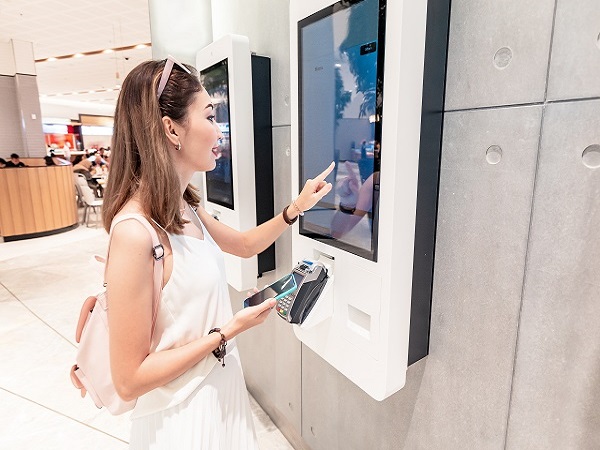In order to raise the bar for future retailing, retailers need to ambitiously reimagine their relationships with customers and upgrade their digital and in-store experiences along the way.
Delivering smooth shopping experiences has always been at the heart of retail, but the digital transformation has amplified it to the next level. Continuous market upheavals and economic volatility have forced retailers and CPG brands to upgrade digital and in-store experiences along the way. With no end in sight for ongoing disruptions, brands have a crucial opportunity to reimagine the future of retailing built upon the curve of evolving technology and customer trends.
Retail must reposition itself in a consumer’s life now as the last two years have changed shopper expectations. What do contemporary shoppers expect? What will delight the shoppers? It is the opportune time for retailers to ambitiously reimagine their relationships with customers and raise the bar for future retailing.
Resilient retail to meet new expectations
Dull brick-and-mortar store experiences will make way for the influence of digital intelligence across all aspects of shopping, and not just e-commerce. Meanwhile, consumers will prioritize tailored, engaging, and educational in-store shopping experiences. Furthermore, their purchases will increasingly be aligned with their personal values and beliefs.
The last two years saw the retail industry battling numerous challenges. Brands with full-suite digital capabilities and agile operations were less impacted than non-digital brands. Looking ahead, digital capabilities and operational agility will remain fundamental to retail success. Digital discovery, e-commerce, and fulfillment will grow and get distributed across the various platforms where shoppers spend their digital time.
At the same time, physical stores will have to be repurposed as experience centres, built to offer entertainment, education, and tailored service. Stores will no longer be the conversion centres but an integral part of the product discovery and research experience. Brands will also use stores to establish a climate for customer loyalty and offer a transparent shopping experience from product discovery to delivery. But, for that to happen, there are a few imperatives to be met.
1. Ubiquitous Commerce
Online shopping has become the norm. Hence, retail brands must create new opportunities for transactions in new digital and physical spaces. Websites are not the only way to engage with shoppers and sell products. As e-commerce has grown, so too has customer engagement with brands. Customers like to shop in ways that are convenient for them. Trends like social shopping have seen an increase in volume, reflecting a strong appetite to establish direct-to-consumer models.
Brands need to completely integrate into this evolving marketplace so that they are available when and where their customers are ready to buy. They need to meet their customers where they are already consuming content.
2. Retail entertainment
Customers now research online before they make a purchase in stores. Their expectations are raised by the ease and convenience of online shopping and doorstep delivery. Retailers need to orchestrate a physical space where customers want to go and not just need to go to complete a transaction. Store owners need to come closer to their communities by immersing people in the brand’s values and leaving them delighted.
The goal should not be to make a sale but to build a relationship. The stores should serve as an escape route for customers to socialize, learn, and enjoy a brand’s creative ethos, rich visual merchandising, and a uniting storyline. Hence, stores need to be redesigned in a way that fulfill these expectations of the consumers.
Brands must also play to physical stores’ strengths that digital cannot replicate. First, customers engage more intimately in a physical environment with real interactions. Second, customers engage all their senses in a physical store. Digital does not allow customers to touch, feel and smell the products. Feeling and trying on products is one of the reasons why customers want to visit the stores. Therefore, brands must deploy accurate visual merchandising and planogram planning to engage shoppers in-store and drive impulse buying
3. Rehumanize shopping
Personalization is increasingly becoming the norm and will only get stronger in the future. Customers are more likely to purchase from retailers that use their names and offer personal recommendations. Today, every brand is pushing for retail analytics solutions, but shoppers want humanity from brands. Data is the raw material, but knowing how to leverage it for enhancing the shopping experience is where the real impact can be found.
An elevated experience makes customers feel that there’s always something unique and relevant for them that is suited to their taste or routine. To effectively implement this, retail brands must use customer data to draw up predictive models, understand purchase patterns, and analyse the shopping behaviour of their customers. They should also use data to understand their customers’ cultural context. Leading brands are already using physical store data to improve the online experience.
Conclusion
Modern retailers have much ground to cover, and time is of the essence. If data is the fuel to deliver heightened experiences, customers are the driver. With multiple new touchpoints emerged over the last two years, retail brands should make use of the opportunities technology provides to track customer behaviour and optimize end-to-end processes from visual merchandising to checkout.
The writer is CEO-APAC, Denave, a global technology-powered sales enablement organization, which takes a solution conscious approach to deliver best practices in sales by leveraging people, processes, technology and innovation to drive revenue.




